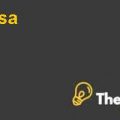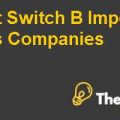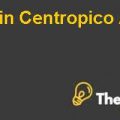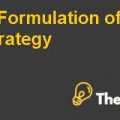Heinz Case Study Solution
Economic Outlook:
The US economy has been in great confusion after the recession that started at the end of the 2007, increasing the financial burden on the companies. It also increased the inflation rate, as a result of which, the U.S market performance had decreased. Decreases in the market performance impact on the companies, which results in volatility in the share prices and revenues of the companies.
Industry Outlook:
After the recession; the overall condition of food industry was highly volatile. The performance of the overall food industry was extremely volatile as the market conditions were uncertain. Due to the high inflation rate; the consumer were shifting to low priced substitutes. The stock prices of the companies started declining. The growth of the overall industry was decreased, which contracted the margins of the company. After the recession, the industry started growing in bits and pieces, as the company’s margins were increased during 2010, but it was expected that industry could face a double dip recession in the future.
Expected Inflation Trend:
The recession that was started in 2007; increased the inflation rate in the US, which increased the cost of living. As the inflation raised, a great pressure was put on the companies regarding the industry margins. As the recession was expected in mid-2010; the expected inflation trends seemed to grow, which caused the economy to struggle; causing slow growth in the industry, which increased the volatility in the revenues.
Interest Rate Trend:
As a result of recession, the inflation rate increased, and it was also expected that the increase in the inflation rate would also result in an increased interest rate, in the near future. Increase in the interest rate effects those companies which have higher cost of debt in their capital structure. Increase in the interest rate results in higher cost of capital, which the company holds on its balance sheet. High cost of capital represents that the company’s WACC is increased, which ultimately puts pressure on its profitability. If the increasing trend in interest rate will continue in future, then it will be harmful for the firms that are highly leveraged.
Conclusion
On the basis of above analysis and calculations; it has been concluded that Heinz seems to hold a stable position at uncertain times as compared to its competitors, and has proven itself to be one of the substantial market leaders in the food industry. In the case of mid 2010 recession, the company’s margins decreased only in the United States’ region, in contrast to which, the company observed an ability of increasing its revenue from other regions. The company also has to focus on enhancing its quality food according to the consumers’ needs and preferences, which helps the company to increase its financial gains. The company also has a good capital structure. The company has 6.71% WACC, which is lower than Del Monte’s, and greater than other competitors. However, the company has to put more efforts in reducing its WACC, in order to gain attractive returns.....................................
This is just a sample partical work. Please place the order on the website to get your own originally done case solution.











